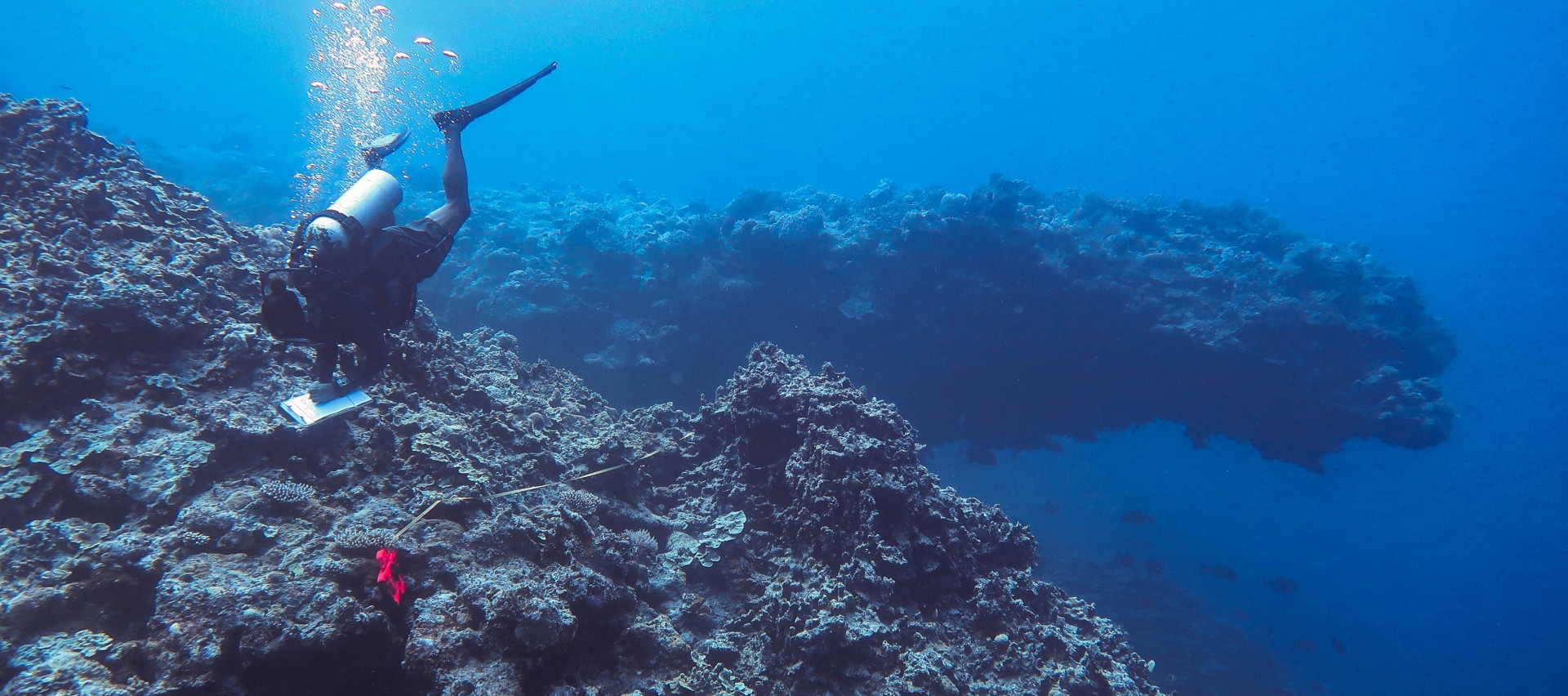- Research
New Report Finds Positive Impact of Ngeruangel Reserve on Commercially Important Fish Species
Researchers at the Palau International Coral Reef Center (PICRC) have published a report on the most recent survey of Ngeruangel Reserve, a Marine Protected Area (MPA) within the Palau Protected Areas Network (PAN), located in Kayangel State. The report, titled “Latest assessment of Ngeruangel Reserve indicates positive effects on commercially important fish in the fore reef habitat,” showcases the importance of ongoing monitoring to assess the MPA’s effectiveness.
Ngeruangel is a partially sunken atoll located 9.6 km northwest of Kayangel, the northernmost state of Palau, and it holds both ecological and cultural significance. It was first declared a protected area in 1996 by the Chiefs of Kayangel and was later selected as a PAN site in 2003. Since 2014, PICRC has conducted four surveys of Ngeruangel Reserve, with the most recent one carried out in 2022. These surveys assessed commercially-important fish, commercially-important edible macroinvertebrates, the establishment of young coral colonies, and the composition of the seafloor. This latest report presents the survey of Ngeruangel in comparison to an unprotected site, as well as the results from previous surveys.
Overall, fish biomass and abundance seem to be gradually increasing in the fore reef habitat of the MPA. However, the opposite trend is observed in the lagoon where fish biomass has significantly decreased from 2018 to 2022. This decrease in fish biomass could be attributed to the decreasing coral cover in the lagoon MPA, which fell below 8%. Coral cover provides essential shelter and feeding grounds for fish, therefore, the loss of coral cover can lead to reduced fish populations in both biomass and density.
On the other hand, the most common edible macroinvertebrate found in the lagoon were various species of giant clams; however, their density has also declined since 2018. In contrast, macroinvertebrate density has remained consistent in the fore reef habitat throughout the survey periods. Meanwhile, a general decline in young coral colonies was observed over time in both the MPA and the surveyed unprotected area. This decline in young coral colonies was more extreme in the unprotected area, suggesting that while both sites are affected by environmental pressures, the unprotected reefs may be more vulnerable to these impacts.
“This study emphasizes the importance of long-term monitoring as it enables a greater understanding of the effectiveness of MPAs,” stated PICRC’s Director of Research, Geraldine Rengiil. “The next survey of Ngeruangel Reserve is scheduled to take place in 2026, and that will add to the data that has already been collected.”
The report can be found on PICRC’s website https://picrc.org/work/technicalreports/. For more information, please contact the Director of Research, Geraldine Rengiil, at [email protected].


